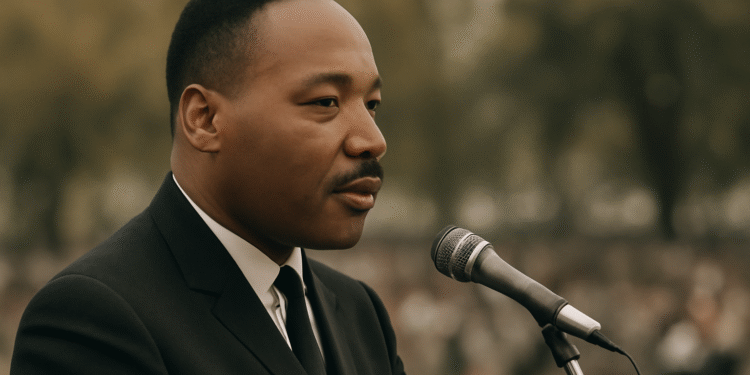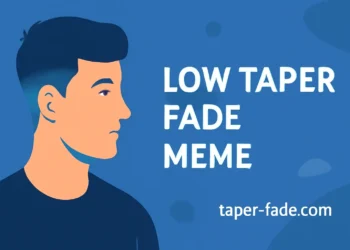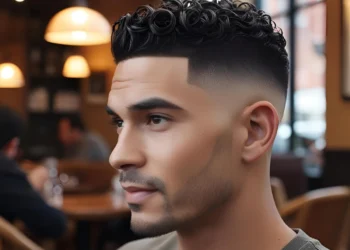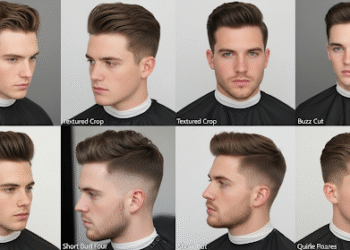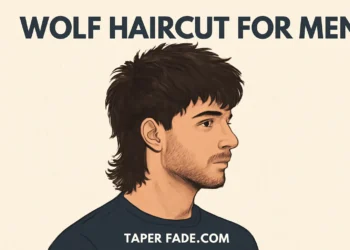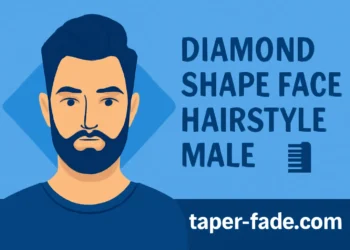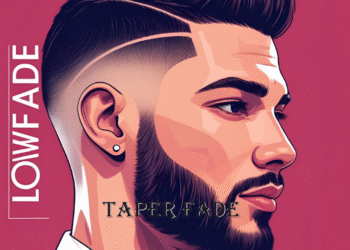Introduction
Martin Luther King Jr. (MLK) is celebrated for his remarkable contributions to civil rights and his inspiring leadership. While his speeches and actions were monumental, his image also played a significant role in shaping how he was perceived. Among the distinctive aspects of his appearance was his haircut, which became a symbol of professionalism and dignity. The question, “What haircut did MLK have?” has sparked curiosity among many. Specifically, MLK’s low taper fade hairstyle is often noted for its clean and polished look, adding a personal touch to his overall image. In this article, we’ll explore the details of MLK’s low taper fade haircut, its significance, and the ways it reflected his persona as a leader.
Read Also : diamond shape face hairstyle for Man
What Is a Low Taper Fade Haircut?
A low taper fade is a hairstyle where the hair gradually shortens down the sides and back, starting just above the ear and tapering down to a shorter length. Unlike the high fade, which starts higher on the head, the low taper fade begins closer to the hairline, offering a more subtle and polished look. For MLK, this style reflected both his professionalism and his carefully cultivated public image. It was neat, understated, and suited his leadership role, complementing his dignified presence.
Don’t Miss : Mid Fade Haircut
Why Did MLK Choose the Low Taper Fade?
MLK’s choice of a low taper fade hairstyle wasn’t just about fashion; it was a reflection of his values. As a leader of the Civil Rights Movement, he needed to maintain an image of respectability and authority. The low taper fade allowed him to project a clean, refined, and disciplined appearance, aligning with his peaceful yet powerful message. The style was both timeless and modest, sending the message that he was approachable yet authoritative.
Comparing MLK’s Low Taper Fade with Other Hairstyles of the Era
During the 1960s, the Black community saw a rise in hairstyles that reflected pride and resistance, such as the Afro. However, MLK’s low taper fade set him apart from figures like Malcolm X or members of the Black Panther Party, who embraced more prominent and expressive haircuts. MLK’s style was a strategic choice, symbolizing professionalism while still affirming his identity as a Black leader in a time of intense social change.
The Professional Appeal of MLK’s Low Taper Fade
As an influential public figure, MLK understood the power of appearance. His low taper fade hairstyle contributed to his professional image, allowing him to be seen as a dignified and respected leader. This haircut worked perfectly within the context of his role as a preacher, activist, and public speaker. It was modest yet powerful, making a statement without drawing unnecessary attention to itself.
How the Low Taper Fade Contributed to MLK’s Public Image
The style of MLK’s low taper fade played an essential role in how he was perceived by the public. It symbolized control, order, and discipline—qualities that were important to MLK’s leadership style. This hairstyle reinforced his commitment to non-violence, showing that a leader could have strength and purpose without resorting to aggressive or divisive tactics.
The Role of Haircuts in Shaping Public Perception
Haircuts have long been used as a tool for shaping personal identity and public perception. MLK’s low taper fade was an integral part of his carefully crafted image. Just as his speeches and actions spoke volumes, so did his appearance. A neat and professional haircut helped communicate his seriousness about the cause he was fighting for, adding another layer to his leadership persona.
How the Low Taper Fade Became a Timeless Symbol
Today, the low taper fade is still a popular hairstyle, often associated with professionalism and respect. For MLK, this hairstyle became more than just a look—it was a symbol of his disciplined approach to leadership. His low taper fade continues to inspire generations of leaders, both within and outside the African American community, as a symbol of dignity and respect.
What Does MLK’s Low Taper Fade Tell Us About Leadership?
MLK’s low taper fade tells us that effective leadership is not about outward flamboyance, but about projecting a composed and consistent image. His hairstyle was reflective of his belief that leaders should lead by example, showing humility and self-discipline. This resonates with modern leadership models, which emphasize professionalism, humility, and respect.
MLK’s Legacy and the Evolution of the Low Taper Fade
The low taper fade has since become a popular hairstyle across cultures, but MLK’s adoption of it has historical significance. His style set a precedent for future Black leaders, showing that traditional, neat hairstyles could coexist with powerful activism. The continued popularity of the low taper fade today serves as a lasting tribute to his leadership legacy.
Conclusion
Martin Luther King Jr.’s low taper fade hairstyle was more than just a fashion statement—it was an integral part of his image as a dignified and disciplined leader. The simplicity and elegance of his haircut reflected his personality and the values he championed throughout the Civil Rights Movement. Today, his low taper fade remains a timeless symbol of professionalism, leadership, and respect.
FAQs
What is a low taper fade haircut?
A low taper fade is a hairstyle where the hair gradually shortens from the top of the head to just above the ear, creating a clean, polished look.
Why did MLK choose the low taper fade?
MLK’s low taper fade hairstyle reflected his commitment to professionalism, discipline, and leadership, contributing to his image as a respectable figure.
How does MLK’s low taper fade compare to other hairstyles of the era?
Unlike more expressive hairstyles like the Afro, MLK’s low taper fade was a modest and polished choice that aligned with his professional image and leadership style.
How did MLK’s haircut contribute to his public image?
MLK’s low taper fade reinforced his dignified and disciplined public persona, helping to convey authority and respect while supporting his message of non-violence and unity.

